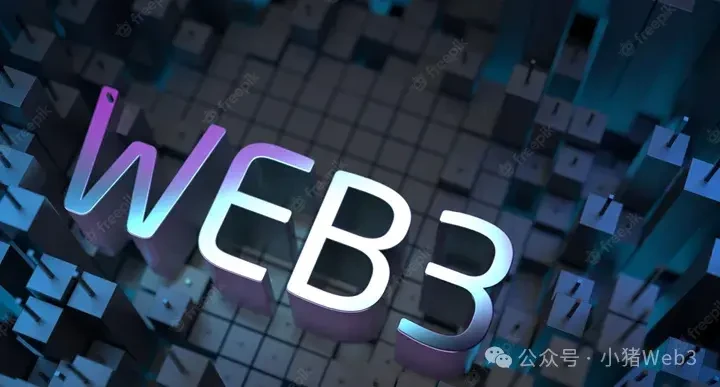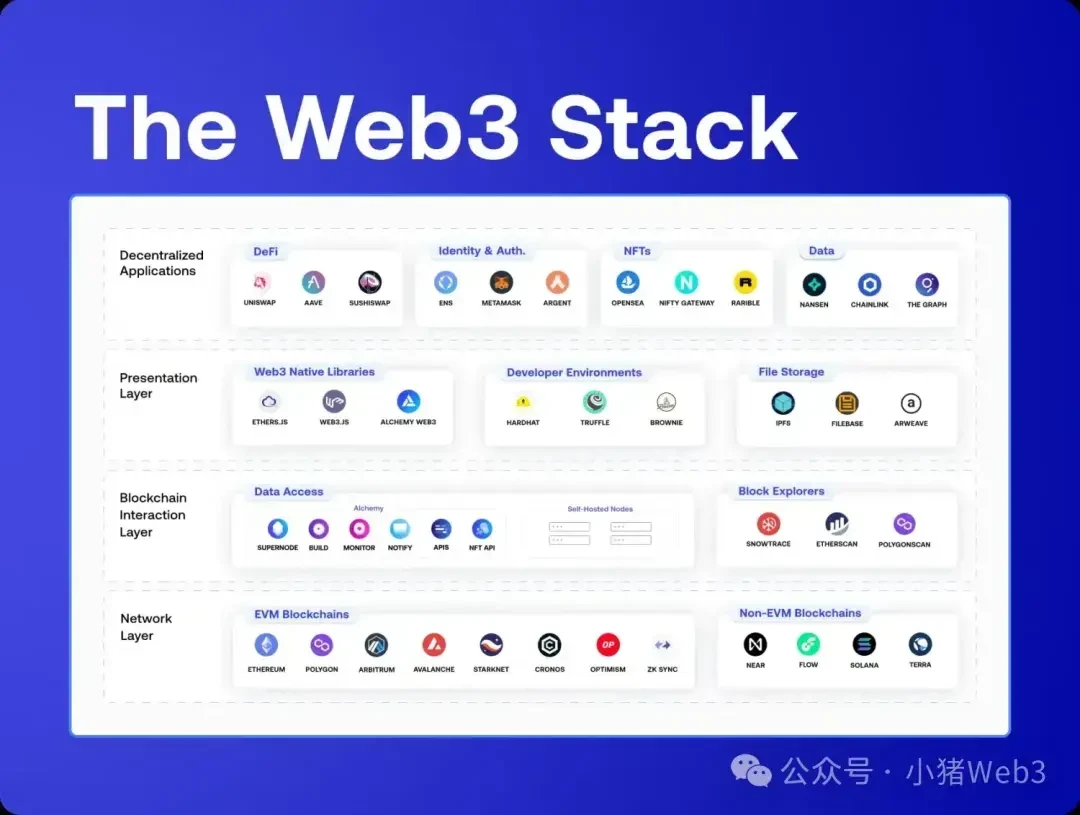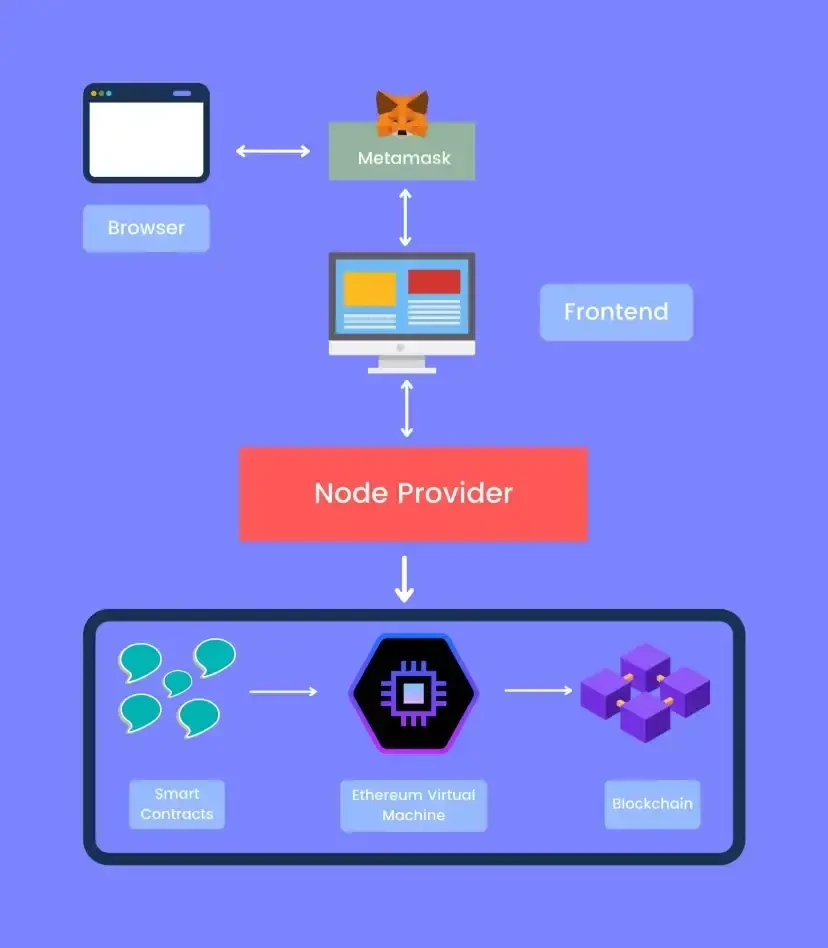# why: Why become a Web3 developer
What is Web3

First, let's introduce what Web3 is.
In 2014, Ethereum co-founder Gavin Wood first proposed the concept of "Web3," providing a solution to the issue of excessive trust required by the internet.
Undeniably, centralized networks have helped billions of people integrate into the internet and have built stable and reliable infrastructure. However, at the same time, a few centralized giants have almost monopolized the internet and can act as they please. Web3, through blockchain, cryptocurrency, and NFTs, returns power to users in the form of ownership.
Web3 has now become an all-encompassing term, representing a vision for a better internet. Although it is difficult to strictly define Web3, it generally has the following characteristics:
Decentralization: Not controlled by centralized entities, but ownership is distributed among builders and users;
Permissionless: Everyone has equal rights to participate in Web3, and no one is excluded;
Trustless: Operates through economic incentives (tokens) rather than relying on trusted third parties.
The Timing and Trend of Web3
The "Book of Lv" has a saying: "A wise man plans according to the times and acts according to the situation." This means that a wise and visionary person will be prepared, act quickly at the right time, make judgments based on the situation, and then take action.
I believe that Web3 is undoubtedly a trend, but as for when it specifically became a trend, some say it was the emergence of Bitcoin, while others say it was the emergence of Ethereum. I don't completely agree. The emergence of Bitcoin marked the beginning of the entire Web3 industry, and the emergence of Ethereum laid the foundation for the Web3 industry. However, I think the real turning point that made Web3 a "trend" was the massive outbreak of the DeFi industry in 2020, which brought about the practical application of blockchain in the financial sector.
The user base of the entire Web3 industry saw explosive growth starting in 2020. Except for the development slowdown in 2022 due to the bear market, the number of users has continued to rise in other years. I believe that in 2024, with the halving of Bitcoin and the arrival of a bull market, the number of users will continue to rise, and the upward trend will be unstoppable.
In fact, the attitude of Hong Kong towards Web3 can also be seen as a sign. Since 2023, Hong Kong has frequently released friendly signals regarding Web3:
In April 2023, the Hong Kong Web3 Association was established to promote the development of the Web3 ecosystem;
In August 2023, the "Policy Declaration on the Development of Virtual Assets in Hong Kong" was issued, explicitly supporting the development of Web3;
In October 2023, the Securities and Futures Commission updated its regulatory policies for the cryptocurrency market, providing compliance guidance for virtual asset exchanges;
In January 2024, the first batch of virtual asset exchanges in Hong Kong obtained licenses;
In April 2024, the Web3 Carnival was held in Hong Kong, and the Hong Kong government launched a digital asset ETF in the same month.
Since Web3 began to trend in 2020, the best time to join Web3 was four years ago, followed by now!!!
Why Web2 Developers Should Learn Web3
As someone who first encountered Web3 in 2020 and transitioned from Web2 to Web3 in 2022, I would like to share some personal experiences regarding "why Web2 developers should learn Web3."
In fact, this question is no different from "why non-AI developers should learn AI." As a developer, I believe that first and foremost, one must be a continuous learner because the technology industry evolves rapidly, requiring continuous learning to keep up with changes and maintain one's competitiveness.
Both depth and breadth of learning are equally important. Delving into technical details will help you become an expert in the field, while tracking technological trends and learning knowledge from adjacent fields can introduce new ideas into your professional field, making your work more creative.
Learning AI and Web3 now follows this principle, as it can broaden your technical knowledge by learning the most cutting-edge technologies, similar to learning mobile development in the early years. However, what sets Web3 apart from AI and these two is the lack of a "singularity moment."
The emergence of the iPhone led to a revolution in mobile development, making it the "singularity moment" for mobile. The emergence of ChatGPT opened up the imagination of AI, making it the "singularity moment" for AI. Web3 has not yet had such a revolutionary innovation, but this also means that Web3 is a more potential and innovative industry. If a Web2 developer can combine their existing technology and experience to build on Web3, they may be able to nurture great innovations.
Learning Web3 as a Web2 developer also has another benefit: in case Web2 becomes obsolete in the future, you will have a backup plan.
# how: How to become a Web3 developer
Web3 Technology Stack
There is currently no unified definition of the Web3 technology stack. I use Alchemy's Web3 Technology Stack panorama, which is from bottom to top:

Network Layer: This is the chain we are familiar with, including Layer1 and Layer2, such as Bitcoin, Ethereum, Solana, Sui, Starknet, etc.;
Blockchain Interaction Layer: This layer allows developers and users to read and write data in the blockchain, including node services, faucets, index services, and blockchain browsers;
Presentation Layer: This layer is mainly for developers and reflects many aspects of Web2 development, such as tools and libraries specific to blockchain developers and data storage on the blockchain;
Decentralized Applications (DApps): This layer is mainly for users and covers DeFi, NFTs, identity and authentication, data and analytics, and many other DApp categories.
When you choose to become a Web3 developer, you need to understand which layer of the Web3 technology stack your skills serve.
If you serve the network layer, it means you need to develop Layer1 or Layer2, which generally corresponds to laboratories or foundations. The required skills vary greatly, including cryptography, consensus algorithms, storage, networking, languages, and virtual machines. The engineering skills depend on the architecture and performance of the chain, and some chains are built rapidly using Cosmos SDK or OpStack;
If you serve the blockchain interaction layer, you generally go to some infrastructure service providers, such as node services, data analysis services, index services. This layer is similar to the basic infrastructure service providers of Web2 (such as cloud services), and the roles are also frontend, backend, data, testing, and operations, so the required skills are roughly similar, with the possibility of additional knowledge of blockchain network interfaces;
If you serve the presentation layer, you are providing developers with tools and libraries, commonly known as "selling shovels." The specific development skills will depend on the product form and the type of developers being served. For example, developing an IDE will involve user interface, local network setup, contract compilation, and contract deployment;
If you serve DApps, the vast majority of Web3 development needs are focused on DApp development. Therefore, when we talk about Web3 development, we generally refer to DApp development. The next section will expand on this content.
Skills Needed for DApp Development
The traditional internet application architecture is likely familiar to everyone, including the frontend, backend, and database. Taking an online shopping website as an example, users first access the interface provided by the frontend through a browser to perform shopping-related operations. If a user searches for a specific product keyword, the backend is responsible for processing the corresponding logic, responding to requests from the frontend, retrieving data from the database, and returning the necessary data to the frontend. The database provides stable storage for the application, including all product information and user-related information (such as shopping cart contents).
The biggest difference between DApps built on the blockchain and traditional applications lies in the role changes of the backend and database. Smart contracts act as the traditional backend, and the blockchain replaces the traditional database, providing decentralized data storage. The close collaboration between smart contracts and the blockchain makes data storage and retrieval transparent and difficult to tamper with.

Therefore, the skills required for DApp development mainly lie in frontend and smart contract development. The skills to master include:
Frontend
Interface development. For frontend engineers with web development experience, interface development skills are transferable. This includes basic skills such as HTML, CSS, and JavaScript, as well as proficiency in modern frontend frameworks such as React and Vue;
Identity verification mechanisms and data read/write. In DApps, user identity authentication and management are implemented through blockchain wallets (such as MetaMask). Therefore, it is necessary to learn how to integrate wallet interfaces and perform data read/write through on-chain APIs. Using JavaScript libraries like Ethers.js can easily implement identity verification mechanisms and data read/write.
Backend
Since many DApps are semi-decentralized, there is also a need for backend development. Although the skills of backend engineers can be transferred, due to the involvement of on-chain data read/write, it is necessary to integrate blockchain SDKs. The preferred development languages are Go, Rust, or NodeJS.
Smart Contracts
For contract development on EVM chains, the main focus is on learning the Solidity language. Beginners are recommended to study on WTF Academy. For contract development on non-EVM chains, it is necessary to learn the specific language for the chain. For example, developing smart contracts on Solana requires learning Rust, and developing smart contracts on Sui requires learning Sui Move. However, learning materials for these are currently limited, so it is necessary to refer to the respective official websites.
Tips for Learning Web3
Stay updated with industry news by regularly reading Web3 media. Recommended sources include Panews, Foresight, LuDong, Jinse Caijing, and ODaily;
Occasionally engage with the Web3 developer community. Recommended communities include Denglian, TinTinland, WTF Academy, BuilderDAO, and OpenBuild;
When learning a new project, start by reading the official documentation, then follow the official Twitter/Discord channels, and if possible, take a brief look at the code repository;
It is essential to work on projects. Those with access should directly engage in practical project development, while those without access can participate in hackathons to gain project experience;
Proficiency in English is crucial. It is important to study English diligently.
In Conclusion
Web3 is definitely the future. For Web2 developers exploring this field, whether in client-side, frontend, or backend roles, they can leverage their existing technical advantages and expand their career horizons, enhancing the creativity of their work.
However, the current Web3 industry is still quite volatile, with many people frantically chasing after it and making aggressive investments, which can often lead to anxiety. If you are determined to become a Web3 developer, it is important to consciously block out some distracting information, focus on the technology itself, and engage in long-term valuable activities that can better help you grow.
免责声明:本文章仅代表作者个人观点,不代表本平台的立场和观点。本文章仅供信息分享,不构成对任何人的任何投资建议。用户与作者之间的任何争议,与本平台无关。如网页中刊载的文章或图片涉及侵权,请提供相关的权利证明和身份证明发送邮件到support@aicoin.com,本平台相关工作人员将会进行核查。




